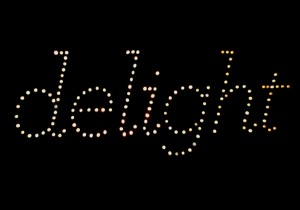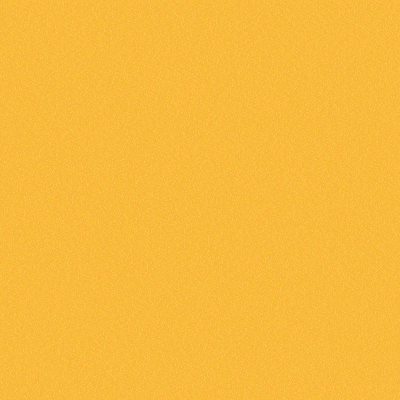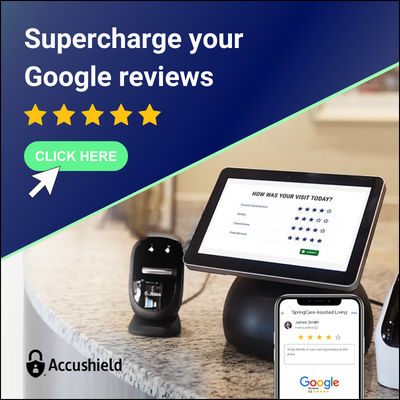Do you think you don’t have a silo problem? Me too, until I attended Agetech a few days ago.
I am writing this after two days at AgeTech West, a great event focused on technology and seniors. I also found it to be an interesting look at how deep and narrow our silos are, and how difficult it is to bust these silos . . .even when we are trying to. Here is what I came away with:
Google Glass
Thad Starner, who is the Google Glass guy spoke during lunch on Friday. At first . . . I was thinking “This is really cool.” As his presentation progressed the “really cool” morphed into intense frustration. There is no doubt that Google Glass is cool and seems to hold great promise for people with physical disabilities (and the rest of us) yet in all the videos clips he showed and stories he told, there was not a single person over even age 40 or 45. So during the question and answer period I asked about Google glass and seniors. He said he was not doing any work with seniors.
After the presentation was over I asked if he could point me to someone in or out of Google who is doing work with Google Glass and seniors. Came up with a zero again. He suggested the Google Glass Explorers community. I found it and signed up then did a search for seniors and elders. I found one reference to a guy who tried them on his 96 year grandmother.
So I find myself wondering about having a guy come to an aging technology conference who seems to not even have any interest in getting his product in the hands of seniors. I find myself wondering how a company with the size and breathe of Google can ignore our rapidly aging population and the dollars they represent.
Talk about a silo!
It’s all about people, but is it?
There was a lot of talk about how the healthcare system specifically and the senior care community more generally needs to be more focused on the whole person as opposed to seeing seniors as primarily a disease, condition or physical limitation that needs to be fixed. It sounded really good, but both in the presentations themselves and conversations afterward, it was clear that the in reality the whole person always took a back seat to solving a specific real or perceived problem.
Where Were the Leaders?
I struggled with how to write this without insulting anyone and so I apologize in advance, but the attendees mostly consisted technology people, academics and industry gadflies (yeah that is me). Don’t get me wrong, these people are really important to the senior care world and there were some real movers and shakers. But I found missing, operations people and the seniors who would be the actual beneficiaries of all this technology.
For Profit v. Not-For-Profit
Not only were there few operations people at the conference every single provider I interacted with was from a not-for-profit organization. I love the not-for-profit organizations but the truth is the for-profit providers are a huge part of senior care ecosystem.
It’s All About The Technology
When the rubber hits the road AgeTech was mostly about technology and which technologies will become commercial successes and which ones won’t. . . which means what matters most is the economic equation and not a quality of life for seniors equation. Most telling is that when looking at the technology companies that were exhibiting, even the emerging ones, it would be hard to argue that any of them was offering something revolutionary that could radically improve the seniors lives.
Don’t get me wrong. I think the profit motive is noble and has in fact given us most of the great things that we have and use every day. I saw some companies whose products and services are worth a good look. Products and services I would love to have as partners at Senior Housing Forum.
The Silo Problem
Mostly though what I came away with was how difficult it is for all of us to break free of our silos even just a little bit. Somehow when it comes to technology we need to be sure that the technology is our slave and we are not slaves to the technology, though I will admit that I am worse than most with it comes to my tablet, laptop and smart phone.
Perhaps what we really need is a pitch for pilots not to a group of technology titans and senior service providers but rather to groups of seniors with the innovators making their pitch, telling their stories to the seniors.
Note: In fairness, much of what is behind the pitch for pilots is getting these emerging ideas in front of seniors to gage their reaction.
Finally, AgeTech West took a big leap forward this year and I expect it to grow into one of the must attend, must exhibit events. I would highly recommend that you put in on your next year’s must attend event.
Steve Moran
If you like this article it would be a great honor to have you subscribe to our mailing list HERE.









From LinkedIn Groups:
As a boomer, I share your frustration Steve. That is why I started my company. I have taken my education on electronics engineering and theoretical mathematics and combinded it with a masters in Gerontology, Management of Aging Services to create bio psycho-social solutions for seniors and disabled persons. I am always on the look out for a great technology that can be applied to a senior’s home. You are right, there are great technologies out there that will help seniors. Two issues: 1) Nobody is defined as an “integrator” of low tech, high tech, community skills and services; 2) Unfortunately the reimbursement system (Medicare, Medicaid) do not pay for augmentation of these technologies to help seniors. CMS, people like me, seniors, adult children of seniors, and providers of technology that make people safer, as well as technologies that provide assistance and increase functionality for seniors who suffer from frailty, sensory impairments, and cognitive impairments should all have been at this high tech pow wow you speak of. Once we get problems 1 and 2 worked out the next issue becomes how to let adult children and seniors know all of this exists, and how to assess their needs and which technologies will work for them. I’m working on this model right now. Thanks for the great summary you provided.
By Thomas M. Lorenz
From LinkedIn Groups
Agetech sounds like a great event to attend next year! Aging2.0 is bringing technology innovation into the aging space and they have just launched their first cohort of startups in their generator. At Senior Living SMART, we offer an opportunity to these developers to test their products in a community setting for feedback as part of their due diligence before bringing products to the market. In our Innovations Lab, our Members will be able to choose a pilot to participate in and provide insights based on resident experience. There are some great technology solutions on the market which improve resident outcomes, pro-actively reduce risk, improve communication and collaboration in resident care, manage staffing and even reduce overtime.
The issue that I find is that each of the technology companies solves their piece of the puzzle – in silos to your point. Operators then have to either buy multiple products to get the complete solution or they have to choose to invest in only a partial solution. We are working with our best-in-class technology partners to bundle resources and offer a complete package at a reduce price.
The other consideration is that at the community level, it is difficult to get adoption of technology products. There is a significant gap in skills, a resistance to change (even good change) and an overall discomfort with new technology. Many companies that I speak with continue to use software that they know is outdated and flawed (and even purchase it again when they change companies!) because it is easier to use a familiar inferior software product than adopt users to a new and vastly improved solution.
Technology can be transformative in resident care, outcomes & reduced readmissions, risk reduction, occupancy growth, improved cash flow & reduced aging, customer feedback, resident engagement and overall improved communication and collaboration but we have to be willing to take the time to schedule a demo to learn what is new. At Senior Living SMART, we will are busy scheduling our educational webinar calendar starting in January. Some of the webinars will feature our innovative technology partners.
By Deborah Howard
Steve,
You seem to be a little frustrated with the attendees at this conference and then suggest that everyone should attend, what gives? Is this the type of conference that Senior LIving IT and operating professionals should attend or is it best left to the early adopters?
Blair great question. I guess what I would like to see is perhaps more interfacing between the technology people seniors and operations. So while I enjoyed the conference a lot, I just think it could be so much more if somehow, you could really get seniors (the consumers), the tech people and the operations people all on the same page or at least in the same room.
Steve
I’ll go next year. I’m a senior.
Consider the conferences for the senior housing industry – ALFA, Leading Age — or for professionals in the senior-oriented social services (ASA) and then consider relative lack of technology discussed, displayed or documented after these conferences.
Someone has to go first — either the tech folks extending what they do out to seniors and their services — or the senior-oriented providers extending out to tech companies.
Too bad the topic was Google Glass — not ready for prime time, for anyone, let alone seniors. Google does have interest in older adults — including their Internet Evangelist, Vint Cerf (founder of the Internet) who speaks at many age-related conferences.
Could be that neither happens and the consumer ultimately will get the technology they want, one way or the other.
From LinkedIn Groups
Ditto, I definately LIKE this as I am heading “upward” in that direction so my son hopefully will have even BETTER resources like this to help others like I do. Thanks for sharing.
Holly
By Williamson Holly
From LinkedIn Groups
Steve — HUGE HUGE issue, possibly beyond the parameters you’ve so adequately addressed. But in terms of a savior — remember, most poor saps are just trying to make a buck and keep their jobs;
Technology could [used to?] be viewed as an “equalizer” — a way to communicate between silos — knocking a window thru the bricks to AT LEAST see each other once in a while.
Now, I fear, silos go up faster than attempts or interest in equalization — like Lucy on the chocolate factory conveyor belt line; Either due to organization, culture, economics…silos are rewarded or provide a rewarding structure, for someone. Follow the money. IMHO.
By F. Todd Winninger
From LinkedIn Groups
Deborah Howard
CEO at Senior Living Smart
Agetech sounds like a great event to attend next year! Aging2.0 is bringing technology innovation into the aging space and they have just launched their first cohort of startups in their generator. At Senior Living SMART, we offer an opportunity to these developers to test their products in a community setting for feedback as part of their due diligence before bringing products to the market. In our Innovations Lab, our Members will be able to choose a pilot to participate in and provide insights based on resident experience. There are some great technology solutions on the market which improve resident outcomes, pro-actively reduce risk, improve communication and collaboration in resident care, manage staffing and even reduce overtime.
The issue that I find is that each of the technology companies solves their piece of the puzzle – in silos to your point. Operators then have to either buy multiple products to get the complete solution or they have to choose to invest in only a partial solution. We are working with our best-in-class technology partners to bundle resources and offer a complete package at a reduce price.
The other consideration is that at the community level, it is difficult to get adoption of technology products. There is a significant gap in skills, a resistance to change (even good change) and an overall discomfort with new technology. Many companies that I speak with continue to use software that they know is outdated and flawed (and even purchase it again when they change companies!) because it is easier to use a familiar inferior software product than adopt users to a new and vastly improved solution.
Technology can be transformative in resident care, outcomes & reduced readmissions, risk reduction, occupancy growth, improved cash flow & reduced aging, customer feedback, resident engagement and overall improved communication and collaboration but we have to be willing to take the time to schedule a demo to learn what is new. At Senior Living SMART, we will are busy scheduling our educational webinar calendar starting in January. Some of the webinars will feature our innovative technology partners.
Steve, thanks much for writing about the conference and for the positive review. While I concur with the end-goal of your suggestions, I believe some of the critiques are missing important parts of the story which I hope to fill in here.
As evidenced by conference evaluations and post-script conversations, the Google Glass presentation was of great interest to aging service providers. It was in fact Vint Cerf at Google who connected me to Thad Starner – genius inventor of Google Glass – and for good reason. As Thad shared at the conference, many of his friends growing up were 80-year olds. His mother was a geriatric nurse in Central Pennsylvania and took Thad along with her to work on many occasions, into nursing home and homecare settings where he spent hours playing and talking with older adults. It was this experience that has given him a keen awareness of both the challenges and liberties of age, and no doubt played a role in his interest in leveraging technology to “lower barriers” to independent living.
You rightly call out “silos” as an impediment to change and desired outcomes. As a former employment counselor for United Cerebral Palsy, and an aging/LTC policy advisor, I think one of those silos is how we think about people. While Thad’s presentation highlighted (in compelling fashion) how Glass is lowering barriers for younger people with disabilities, let’s not fall into the trap of calling foul if the examples given don’t explicitly depict seniors. Rather, let’s take the opportunity to say – “wow, this has tremendous potential for older adults and aging service providers, let’s help make it happen.” Beginning on the ride home from the conference (I wasn’t driving) I’ve been corresponding with Thad and several of his colleagues at Google X (the ‘moonshot’ innovation arm of Google) about pursuing a “Senior Glass Explorers” initiative to explore how Glass can help sustain and renew older adults’ independence, mitigate loneliness/empower social network, enhance safety, and enable smart caregiving in various settings. There is interest, and I know of at least one provider organization in attendance who has already taken steps to explore the use of Glass with residents. Thad was absolutely the right guy to elevate us out of our customary channels of thinking and open up new possibilities. For more background on how Google is taking on aging, readers can review the LeadingAge California feature entitled “Will Youthful Tech Giants Alter the Future Realities of Aging? They intend to do just that.”
Leaders were there. CEOs, Executive Directors, COO’s, Administrators, VPs, and program operations staff from senior living/aging service organizations up and down the West Coast and from nearly a dozen states were in attendance. Do we want more? Absolutely! Considering the every-day demands of aging service organizations, and the many, many conference venues on the calendar, it has often been the “early adopter” provider leaders and their IT experts who’ve attend AgeTech – but that’s changing. This change is evidenced by the 44 “applications” submitted by providers in attendance (including affordable housing!) who were stepping-up to be a pilot partner with one of the 10 start-ups in the live “Pitch-for-Pilots.” The attendance of various leaders and operations staff with a specific interest in technology increases the value of the conference as a cross-sector networking event as well, hence our outreach to venture capital, technology innovators, research partners, and others in this growing aging technology community.
Many of the aging service providers in attendance were indeed not-for-profit, due largely to AgeTech being a program of the three West Coast LeadingAge (nonprofit) provider associations. However, several for-profit providers were in attendance this year, thanks to our supporting organizations including the California Assisted Living Facility (CALA) association. We hope for continued growth in attendance.
Finally, I whole-heartedly concur with the goal of involving older adults themselves. I’m happy to report this is already on the docket for next year’s conference. One of the ways we plan to do so is to feature outcomes/experiences from the ten P4P projects, including feedback from the senior participants themselves. We’ll also seek to include older adult presenters in educational sessions.
I think most will agree that this year’s event, AgeTech’s fourth conference but first as “AgeTech West,” accomplished the difficult task of transcending usual conference fare to being a catalyst to inspire and empower providers and innovators alike to transform aging services as we know it. It was a “happening” and “coming together” of people from two different worlds toward the same goal of improving quality of life and care services for older adults. For several people in attendance, it was something they will point back to as a pivotal moment for them and the field of aging services (based on feedback received). Its success was a testament to the value of real partnerships and a collective willingness to take risks and try new things. Many thanks to all of our supporting organizations and partners, and to Aging2.0 in particular, for their collaboration in making the Pitch-for-Pilots come to life.
Watch for an announcement on http://www.agetechwest.org in the coming days about the Pitch-for-Pilot partner pairings with a video of the pitches as well as a sampling of sessions. Join the community on Facebook, LinkedIn and Twitter.
Respectfully,
Scott
Hi Scott:
I appreciate your joining the conversation and sponsoring the event as well. Some thoughts on your response:
1. With respect to Google Glass. I love the concept and actually even went as far as signing up to be an explorer, and ultimately received a code (though decided it was more money than I wanted to spend). In most settings I would have found his presentation and videos compelling and so I guess in the abstract that is still true. But my big disconnect was that while he told the story of his family history which made me think “he gets it” the presentation itself and his response to my questions (during the Q & A period and when I approached him after the presentation) made it pretty clear he/they are not paying any attention to the senior market.
That being said, it is refreshing and exiting to hear you are engaged in discussions in that very area and would love to follow it closely, because I do think glass has huge potential for seniors.
2. Don’t get me wrong, I really liked the conference a lot and hope to be there again next year. In talking about leadership attendance, I have not seen the breakdown of attendees so what I wrote about was very antidotal. I keep writing about these issues in the hope that in some small way I can contribute to breaking down the silos.
3. Please know that when I force myself to step back, I find myself engaged in silo behavior and thinking so this article is as much about me and human nature.
4. If you read comments you will see that my 85 year old father is ready to be one of your senior attendees next year.
Steve